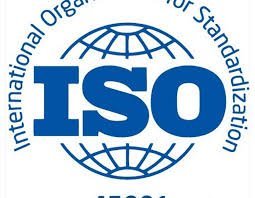How to Conduct Effective Internal Audits for ISO 45001 Compliance
Learn how to conduct effective ISO 45001 internal audits to enhance workplace safety, ensure compliance, and achieve certification with a structured approach.

Ensuring compliance with ISO 45001 is essential for organizations that prioritize occupational health and safety. Internal audits play a vital role in assessing whether an organization meets the standard's requirements. A well-conducted internal audit helps identify potential risks, ensures continual improvement, and prepares businesses for ISO 45001 Certification.
To conduct an effective internal audit, organizations need a structured approach. Understanding ISO 45001 requirements and implementing a step-by-step auditing process ensures thorough compliance. Additionally, training programs designed for internal auditors can enhance their ability to evaluate processes and systems effectively.
2. Understanding ISO 45001 and Its Importance
2.1. Key Features of ISO 45001
ISO 45001 is an internationally recognized occupational health and safety (OH&S) management system standard. It helps organizations mitigate risks and create a safer work environment. The framework follows a risk-based approach and encourages worker participation in safety management.
2.2. Benefits of ISO 45001 Compliance
Complying with ISO 45001 brings multiple benefits, including:
- Improved workplace safety
- Reduced incidents and injuries
- Legal and regulatory compliance
- Enhanced employee morale
- Streamlined risk management
Organizations that undergo an internal audit process as part of their compliance strategy improve their chances of obtaining ISO 45001 Certification efficiently.
3. The Role of Internal Audits in ISO 45001 Compliance
Internal audits are an essential component of maintaining ISO 45001 standards. They help organizations identify gaps in their safety management systems and implement corrective actions before external audits.
3.1. Objectives of an Internal Audit
The key objectives of an internal audit for ISO 45001 include:
- Assessing compliance with OH&S policies
- Identifying non-conformities and areas for improvement
- Ensuring continuous enhancement of safety management systems
- Preparing for external audits and ISO 45001 Certification
3.2. Frequency of Internal Audits
The frequency of internal audits depends on the size and complexity of an organization. Most businesses conduct audits annually or biannually to maintain ongoing compliance.
4. Steps to Conduct an Effective Internal Audit for ISO 45001
4.1. Step 1: Planning the Audit
Effective auditing starts with a clear plan. Organizations should:
- Define the audit scope and objectives
- Establish audit criteria based on ISO 45001 standards
- Assign a qualified audit team
- Schedule audit dates and notify relevant departments
4.2. Step 2: Reviewing Documentation
Auditors should examine the organization’s OH&S policies, procedures, and previous audit reports. Reviewing documentation helps understand existing safety measures and identify potential gaps in compliance.
4.3. Step 3: Conducting the Audit
During the audit, auditors should:
- Interview employees and management
- Observe workplace safety practices
- Evaluate the effectiveness of safety protocols
- Identify non-conformities and risks
4.4. Step 4: Reporting Findings
Once the audit is complete, the findings must be documented in a report. The report should include:
- Non-conformities and potential risks
- Areas of improvement
- Recommendations for corrective actions
- A timeline for implementing changes
4.5. Step 5: Implementing Corrective Actions
After the audit, organizations must address any non-conformities by implementing corrective actions. This step ensures continuous improvement and strengthens compliance with ISO 45001 requirements.
5. Common Challenges in Conducting Internal Audits
Organizations may face challenges while conducting internal audits for ISO 45001, including:
- Lack of skilled auditors
- Resistance from employees
- Incomplete or outdated documentation
- Difficulty in identifying risks
6. How Training Can Enhance Internal Auditing Skills
6.1. Importance of Internal Auditor Training
Enrolling in auditor training programs is crucial for those responsible for conducting internal audits. Training provides in-depth knowledge of ISO 45001 requirements and enhances auditing skills.
6.2. Key Topics Covered in Auditor Training
Professional training programs cover topics such as:
- Audit planning and execution
- Identifying and reporting non-conformities
- Risk assessment techniques
- Preparing for ISO 45001 Certification
7. Future Trends in ISO 45001 Internal Auditing
With advancements in technology, organizations are leveraging digital tools for internal audits. Future trends include:
- Use of AI and automation in auditing processes
- Real-time data collection for improved risk assessment
- Cloud-based compliance management systems
Conclusion
Conducting effective internal audits is essential for maintaining ISO 45001 compliance. A structured approach that includes planning, reviewing documentation, and implementing corrective actions helps organizations improve workplace safety. Additionally, investing in professional training ensures auditors have the necessary expertise to conduct thorough assessments. By following best practices, businesses can enhance their safety management systems and achieve ISO 45001 Certification successfully.
What's Your Reaction?











